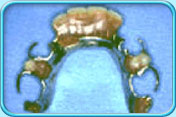Denture
A denture is a removable set of false teeth that is used to replace missing teeth in the mouth.
Purpose
- To restore chewing function
- To help articulation
- To restore a normal facial profile
- To correct abnormal bite
Types
Complete denture
Partial denture
Points to note about wearing dentures
- Initially it may be difficult to get used to a new denture like feeling nausea, but you will soon be accustomed to it after wearing it for a period of time.
- If the discomfort persists, you should go to see the dentist who may check the denture and further adjust it if needed. Such that you can wear it more comfortably.
- Since oral conditions may change with time, a denture may gradually become loose and unfit. Therefore, a regular dental check-up is necessary, so that the dentist can check the denture and adjust it according to the oral condition.
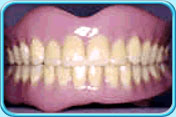
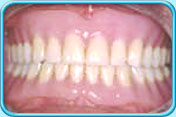
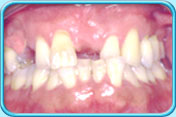 Before treatment
Before treatment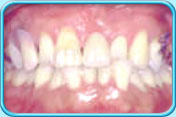 After treatment
After treatment